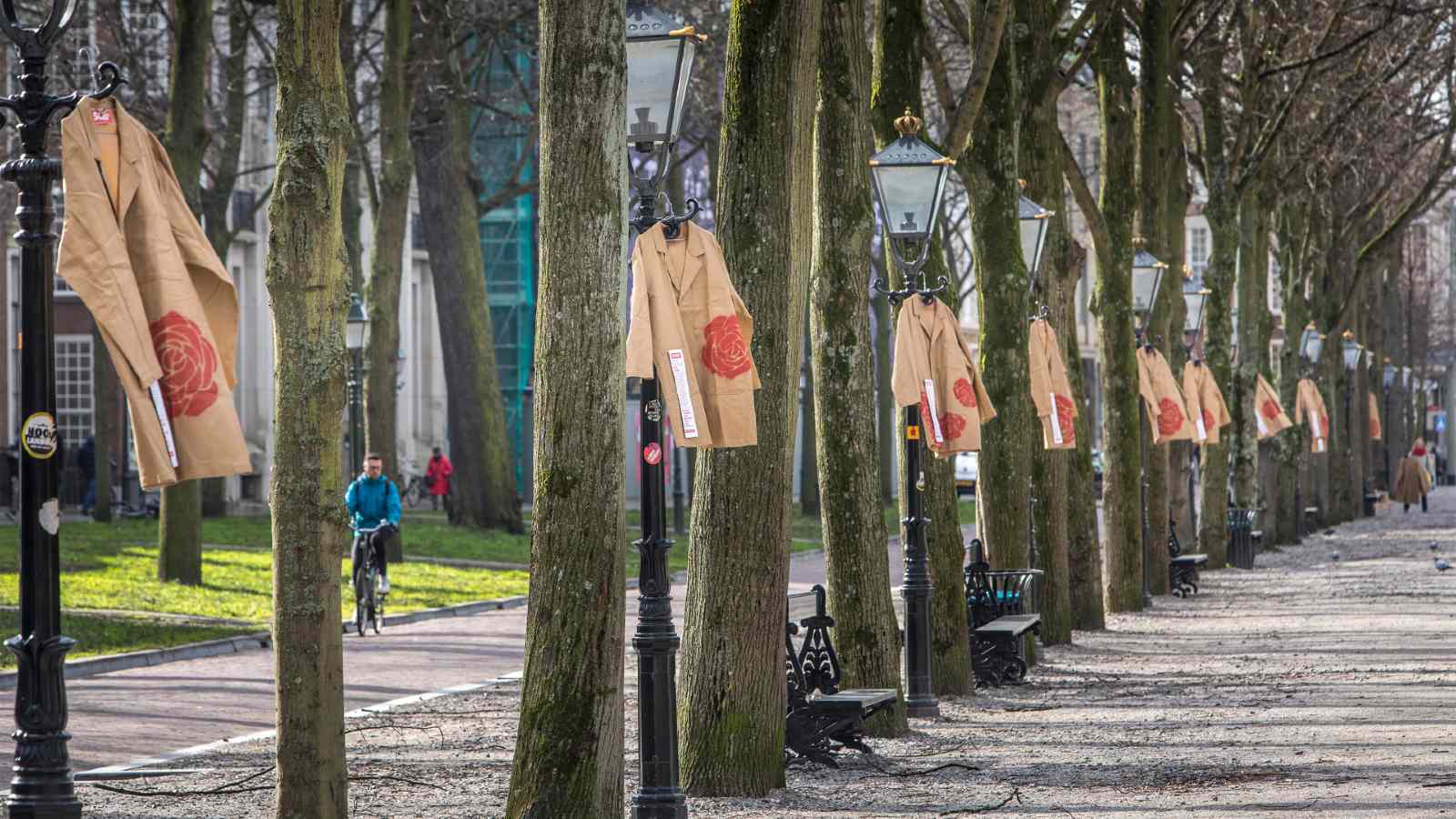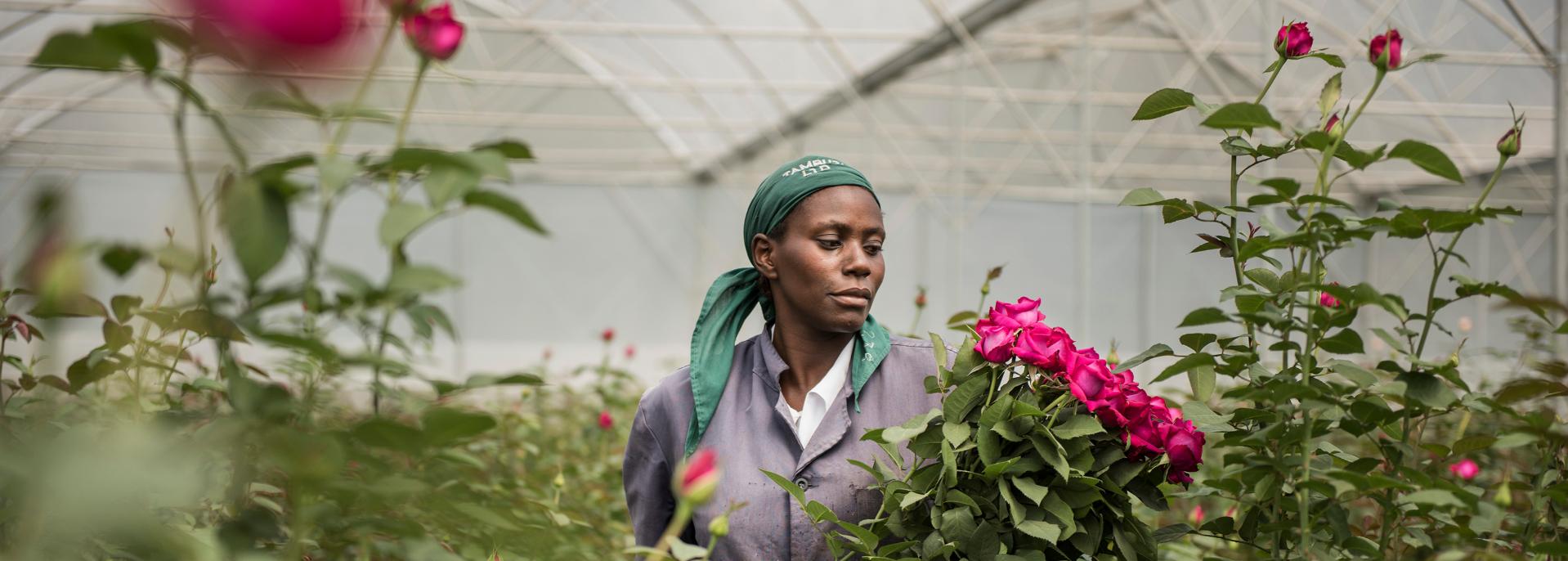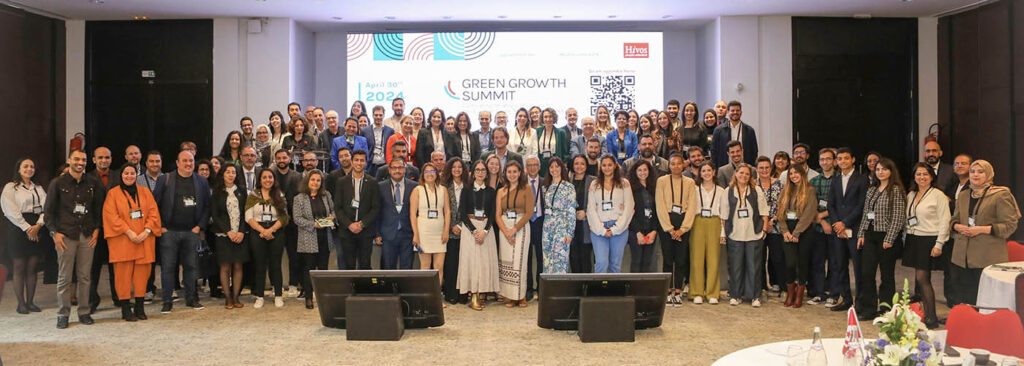How do you get governments, producers, retailers, certifiers and civil society to step up efforts together towards a living wage in the agri-food sector? You organize “The Only Way is Up!” – the first major European conference on living wages organized in seven years. Last November, 300 people gathered in the Van Nelle Fabriek in the Netherlands to do just that. It is one of the many activities we have organized over the past five years to ensure women workers in the horticulture sector earn a living wage.
Low wages are a persistent problem in the horticulture sector in East and Southern Africa. Many countries lack a minimum wage, and even when there is one, it is often not enough to afford a decent life. The current COVID-19 crisis further exacerbates this. The impact of the pandemic on women workers in the flower industry is enormous. Massive lay-offs are affecting families that were already living in poverty.
“Every month I spend around 50 dollars (USD) on food, and I replace my gas cooker tank at around 7 dollars once every month,” says Fatuma Murugi*. She works at a flower farm in Lake Naivasha, Kenya, and earns 140 dollars a month. “Given my low salary, I can only afford ugali (stiff maize porridge) with omena (Lake Victoria sardine) or sukuma wiki (kale). My son and I can only afford meat twice every month,” she explains.
A living wage
The concept of “living wage” was established to calculate what someone needs at minimum to survive. A living wage is, according to the definition of the Global Living Wage Coalition:
“The remuneration received for a standard workweek by a worker in a particular place sufficient to afford a decent standard of living for the worker and her or his family. Elements of a decent standard of living include food, water, housing, education, health care, transportation, clothing, and other essential needs including provision for unexpected events.”
Each region has its own living wage benchmark. For example, Lake Naivaisha, where Fatuma lives, is an urban area in Kenya. Here, a living wage has been calculated at 264 USD per month. While in Mount Kenya, a rural area, 138 USD are needed to cover all basic expenses. Despite those numbers, the minimum wage for unskilled agricultural workers is only 65 USD in Kenya.
The Living Wage Lab
Living wage is a complex topic and cannot be solved by individual companies alone. It needs a sector and chain approach. This is why we organized The Only Way is Up! conference. The idea for the conference came up at the Dutch Living Wage Lab.
The Living Wage Lab was established by Hivos and Fairfood in 2015. “The Lab is a multi-stakeholder platform on living wage and living income,” explains Isa Miralles, coordinator for the Living Wage Lab at Fairfood. “The Lab actively involves a wide range of stakeholders to support activities and learning aimed at realizing living wages and income in the global agri-food supply chains. We want to inspire action and collaboration between the different participants of the Lab.”
The Dutch Living Wage Lab has been a success over the past five years. It has held 17 sessions, and brought together participants from 50 different companies, retailers, certifiers, government offices and non-governmental organizations. Speakers from Verstegen, Fairphone, ILO and ASN Bank used the platform to share challenges and solutions, and ask for advice on how to pay a living wage. “For me, the biggest success of the Lab is that it has truly inspired several agri-food companies in the Netherlands to investigate their supply chains and assess the living wage and income gaps of their workers and producers,” says Ms. Miralles. “Information and data are a pivotal first step to build knowledge and move on to the next level of action.”
A Ugandan example
Another important result of the Living Wage Lab is the Fair Cents Pilot, started by Ugandan-based grower Wagagai and certifier Fairtrade. It is the first attempt in the floriculture sector to work towards paying a living wage. Workers at Wagagai in the lowest wage brackets have received an extra month of salary several years in a row now because of the Fair Cents Pilot.
In addition, nine growers (out of fourteen in total) met during a living wage workshop in Uganda in 2018 to discuss wages in the Ugandan flower sector. We are currently examining options for a broader Lab approach there to discuss the national minimum wage. Malawi has also started its own Change Lab, where stakeholders from the horticulture industry come together to discuss innovative ideas on how to work towards a living wage in the sector.
Research-based campaigning
Apart from working with businesses, we also conducted a public campaign to involve Dutch consumers and put pressure on Dutch retailers to take steps towards a living wage. That was the 2018 campaign Small Change, Big Deal. True Price conducted a study into how much extra needed to be charged to pay rose production workers a living wage. The result? Only 13 cents. With this information, and the help of the Power Flower Girls, we took to the streets on Valentine’s Day in 2018 to tell the public the good news. It only takes small change (13 cents) to get a big deal: a living wage for the women who pick our flowers.
Then we took these results to seven Dutch retailers and asked them to be the first to bridge the 13-cent gap. Retailers have a lot of power because they buy their flowers directly from the producer and can therefore demand certain standards, like a decent wage for the workers on the farm. On the other hand, they determine the price for the consumer. “We are trying to put pressure on the supermarkets to look at ways to make that 13 cents happen,” explains Caroline Wildeman, Program Manager of the Women@Work Campaign. “Everybody in the chain needs to do its part. From the Africa flower farms, through the trade, the Dutch auction and the supermarket, eventually to the consumer.”
Launching a game
Despite some promises, nothing has happened so far. That is why in 2019 we launched the “Hello supermarket: how difficult can it be?” game. In the game, seven Dutch retailers compete against each other to pay women flower pickers a living wage. On Valentine’s Day 2020, we hung up dozens of flower pickers’ coats in the iconic Linden trees along the Lange Voorhout in The Hague. “The aim of this campaign was to show the unseen work behind the roses in the supermarket,” says Ms. Wildeman. “Because the consumer doesn’t see the extremely low wages and long working hours the women workers make, which is especially relevant around Valentine’s Day.”

Although none of the supermarkets have so far taken concrete action on living wages in the flower industry, we have seen some improvement in other sectors. During the living wage conference in November 2019, all Dutch retailers committed to join the living wage pilot for banana growers. The aim is to close the living wage gap (the difference between the living wage and the paid wages) by at least 75 percent in the next five years. It seems that if there is a will, they can find a way.
Our work to ensure a living wage for women workers in horticulture has demonstrated the importance of bringing together different stakeholders, offering them advice and expertise, allowing them to experiment, and keeping a dialogue going with (frontrunner) companies. Living wage requires long-term efforts and patience, but all these little steps show that we’re moving in the right direction. Are we there yet? No, but as long as we keep going forward, we will get there eventually.
This article is part of a series published in the final year of a unique five-year-long strategic partnership between Article 19, Hivos, IIED and the Dutch Ministry of Foreign Affairs. Under the ministry’s Dialogue and Dissent program, Hivos has aimed to strengthen the influencing power of civil society around the world. You can find more of these inspiring examples in Raising voices around the world.
* Not her real name








